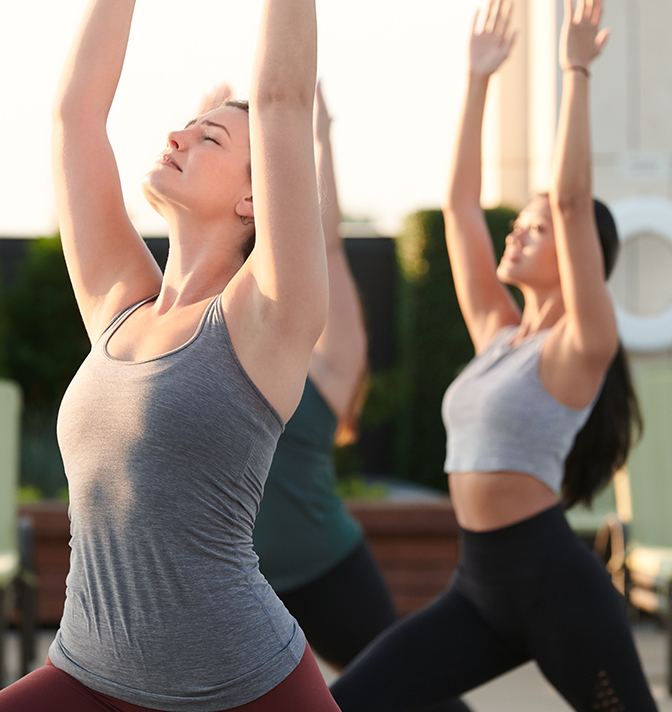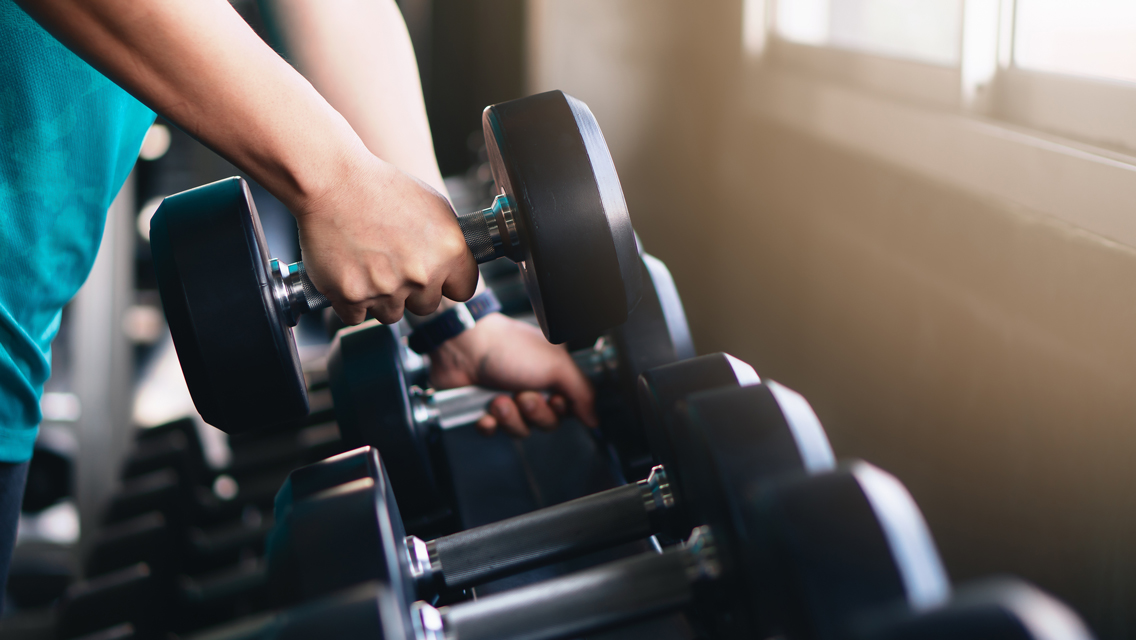One of the perks of my first real job was a discounted membership at a local gym. I was thrilled. At 22, I’d just run my second marathon, and I’d spent four years on my college’s track and cross-country teams. I figured the gym would be my second home.
When I arrived for my first day at the gym, I very quickly became aware that I didn’t quite fit in. For one thing, everyone seemed to be wearing carefully matched outfits, which made me painfully conscious of my own wrinkled cotton T-shirt and un-color-coordinated shorts.
But I forged ahead with my workout anyway and earned several dirty looks when I accidentally ran the wrong direction on the track. And when I entered the weight room, even more confusion set in: I didn’t recognize any of the machines and didn’t know what to do.
I returned home from the club feeling depleted, and it wasn’t from my run. My spirit felt bruised. Or maybe it was just my ego. In any case, I never set foot in that gym again.
It turns out that a lot of folks have similar health-club horror stories – from feeling out of place in a step class to feeling foolish for not knowing how to start up a treadmill. Studies commissioned by the International Health, Racquet & Sportsclub Association (IHRSA) suggest that body-image issues, a lack of knowledge about equipment and classes, and concerns about fitting into gym culture are the three biggest causes of gym anxiety.
Whether you’re a workout rookie or longtime athlete, finding your groove at an unfamiliar gym can be intimidating. But if you’re serious about your health and fitness goals, it’s essential to address and overcome that anxiety.
Happily, there’s plenty you can do to ward off discomfort, face down your fears and transform the gym into a place you’ll love, not loathe. And if you already feel right at home in the gym, demonstrating a little empathy for someone who doesn’t share your confidence just may help him or her feel a little more like part of the neighborhood.
Room for Every Body
Anne Moore, 28, says that she worried about reliving painful school memories when she joined a health club. “My major fear was that I would have a repeat experience of junior high gym class, where I felt slower and fatter and generally more ungainly than anyone else,” she says. Her solution, she admits, was a bit unconventional: The Burlington, Vt., resident dyed her hair green. If nothing else, it took people’s attention off her body.
Getting comfortable with a gym doesn’t have to entail such drastic measures, however. In fact, your first step might just be seeing how “normal” you really are. While gyms do have their share of serious athletes and even the occasional supermodel, these superfit individuals do not represent the vast majority of gym users.
“In terms of experience and fitness levels, our research has clearly shown that typical health-club members are quite representative of the general American population,” says Bill Howland, IHRSA’s former director of research. “The majority of members are people in their 30s, 40s and 50s. They’re not necessarily former college athletes.”
The solution to many body-image concerns is deceptively simple: Do the workout anyway. Then repeat.
The solution to many body-image concerns is deceptively simple, says Larina Kase, PsyD, president of Performance and Success Coaching in Philadelphia: Do the workout anyway. Then repeat.
“If you avoid the situation, your anxiety will remain,” Kase says. “You may be convinced that your jiggly thighs are a big deal, but after running 10 times in a busy area, you’ll be over it.”
Wearing the right clothing can also help put you at ease – but what’s “right” depends entirely on you, not the fashion trend at your gym. Find comfortable workout clothes that perform well and that make you feel good about yourself. And modest, lightweight clothing can be helpful in providing cover for scars or skin conditions like eczema. “If you wear long-sleeve [breathable] shirts or pants, no one will ever have to know,” says Derek Dodd, a personal trainer who has ranked among the top 100 trainers by Men’s Journal.
Knowledge Is Power
When Minneapolis resident Dave Marolt joined a gym in 1994, he felt self-conscious about his lack of fitness knowledge. “I didn’t want to look stupid on the machines,” the 31-year-old remembers. Still, he wanted to get fit, so he did his cardio workouts when he knew few people would be at the gym: midnight. He spent a year on this late-night routine before he was comfortable enough to go during the day.
While Marolt’s solution was creative (and, in his case, effective), it was far from necessary. Even avid fitness buffs have trouble keeping up with all the new equipment and classes coming through gyms these days, so there’s no need to feel that you should learn the ropes in secrecy. If you’re relatively new to the gym (or just need a refresher course), ask about an orientation tour. At most clubs, these informative walk-throughs are free to members and can be customized to your areas of interest.
“Remember that the club staff is there to make your workout as effective as possible, no matter what your skill level.”
Got a specific question? “March right up to a staff member and ask,” suggests Jeff Zwiefel, senior vice president of the fitness division at Life Time. “Remember that the club staff is there to make your workout as effective as possible, no matter what your skill level.”
“Many clubs have fitness professionals there at all hours for tips and advice, and I think too few people take advantage of that resource,” agrees Howland. Naturally, you can’t expect to get an hourlong training session for free, but as Howland points out: “If it’s a matter of a 10-minute conversation to get help with new equipment or to find an appropriate class, those staff members are there to help.”
That said, hiring a personal trainer might be more affordable than you think. “Group training, where two or three people work with one trainer, is becoming increasingly popular at our clubs,” Zwiefel notes. “It’s an affordable way to get professional expertise and a fun way to meet new people.”
Active Cultures
A health club, like any other place, has certain unwritten rules of engagement. Dodd encourages those who are anxious about fitting in to pair up with an experienced friend or family member. He or she can clue you in about locker-room etiquette and weight-room faux pas.
No matter what your concerns, a little reflection may change your frame of mind. John McGrail, a Los Angeles hypnotherapist who works with clients whose fears affect their quality of life, urges people to examine their worries before they become blockades. “Evaluate the source of your fear: What is it that is triggering your discomfort?” he says. “It’s possible that your worst fear isn’t actually much of a threat.”
Years after my first difficult encounter with a health club, I’m happy to say I can now enter a gym with ease. I always go with a friend, and I’m not afraid to ask questions. Sometimes while I’m there, though, I see someone who reminds me of my former self. If I could, I would tell him or her what I wish I had heard back then: It only gets easier, I promise.
Quick Assist
Even if you’re a gym veteran now, you can probably remember a time, not so long ago, when all the weight machines looked mystifying and all the group fitness classes seemed like cliques. Keep those days in mind, if you can, when you see newbie members looking stricken, bewildered and out of their element. Most would probably be grateful for some friendly support from a seasoned pro like you. Just take care with how you extend the helping hand.
- Be friendly and reassuring. If you see someone new in a class, introduce yourself and give him or her the skinny. “You might say something like, ‘You’ll love this instructor – just let her know you’re new and she’ll help you with cues,'” suggests Bill Howland, former director of research for the International Health, Racquet & Sportsclub Association. “People appreciate that kind of reaching out.”
- Put yourself in their shoes. When you act like a know-it-all, you can scare people off, but when you authentically empathize, letting them know they’re not alone, it can be very comforting, says Gregory Florez, CEO of Fitadvisor.com and spokesperson for the American Council on Exercise. “Approach a person in a nonintimidating way,” he suggests, “and say something like, ‘Boy, I had trouble with that machine too, at first. Here’s what I did to make it easier.'”
- Leave detailed training advice to the pros. “People generally aren’t receptive to corrective advice from total strangers,” says personal trainer Derek Dodd, noting that too much instruction can cause people to become defensive. Help them turn the treadmill on, but don’t tell them which workout to do or harp on their form.
- Point them in the right direction. Maybe you can’t provide the in-depth training and guidance a novice requires, but you might know someone who can. If you had initial guidance from a trainer or instructor who was helpful to you, mention his or her name and offer to make an introduction.
This article originally appeared as “Overcoming Gym Jitters”.




